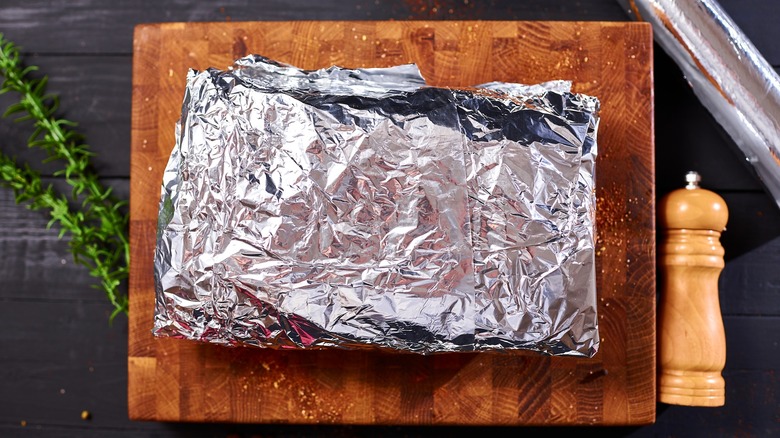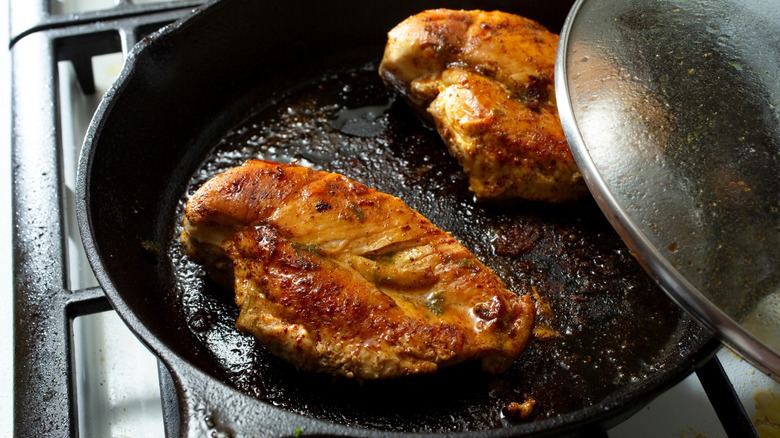Why You Should Use Aluminum Foil When Reheating Meat
After toiling to cook a succulent piece of meat to perfection, the last thing you want to do is annihilate it when you want some leftovers. The microwave is the best way to ruin leftover steak, and the same goes for reheating meatloaf. A skillet works for some types of meat, but most look to the oven to make the job quick and easy. Many folks slap a piece of aluminum foil over their favorite cut before it goes in without ever questioning why, though it often is the best move.
When meat is left uncovered in the oven, it dries out in a hurry, as there is nothing to block all the moisture from escaping from the protein. After just a short while, you can end up with a dried-out hunk of something that was once delicious. Aluminum foil also regulate the temperature of food as it warms up so you don't overcook it. A layer of foil also acts as a protective layer over the top that prevents it from getting burned.
What if you are reheating meat and have no foil?
It is always a gut punch when you are making something in the kitchen and realize you don't have all the necessary tools in the middle of the process. Still, if you find yourself without aluminum foil as you are about to reheat yesterday's minute steak for another helping, there is no need to worry. Aluminum foil isn't the only way to give your leftover meat the protection it needs from the intense heat of the oven.
If you are out of foil, reach for an oven-safe skillet or pot and a lid. The lid will keep moisture locked into the meat much the same way foil does, and it will also prevent the top from becoming charred. If you have any concerns that it won't do the trick, add a little bit of water, broth, or oil in with the meat. This can help to moisten it so it comes out just as tasty as the first time you cooked it.

